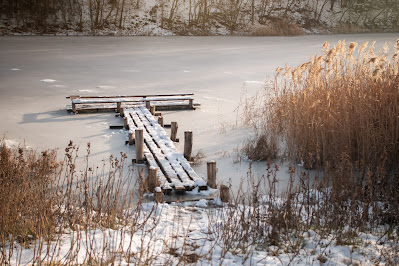Below we touch on why ice can be destructive to your dock, boat, or boathouse and de-icing options and methods for mitigating the risk.
Water column composition and temperature in the winter:
When water temperature decreases it becomes denser (heavier) until it reaches 39 degrees Fahrenheit. The colder denser water falls to the bottom and the slightly warmer less dense water moves towards the surface. 39 degrees is the point where it completely flips. From 39 degrees to 32 degrees the water quickly becomes less dense, and cooler water rises towards the surface while warmer water falls to the bottom. At 32 degrees water density is at its lowest creating the perfect conditions to freeze, which of course is what happens at the surface.
Why ice is destructive:
As ice expands it encroaches the pilings of a dock, a boat, or a boathouse, essentially squeezing them. Mass destruction comes from what professionals’ call “ice jacking”. Ice jacking occurs when water levels rise and fall usually from rainfall or changes in tide. When ice forms around a structure at a high-water level, it stays at that height while the water level lowers, creating a gap. When the water level rises again and freezes at the surface, the new ice level pushes upward “jacking” the initial surface level ice higher. Because the top-level surface ice is already “squeezing” the structure, with multiple cycles, the ice jacking can lift a piling from its foundation, even breaking it in half. The result can be a collapsed dock, damage to the foundation of a boathouse, or damage to a boat or lift.
Read more about pond aeration to de-ice on our website!
HIBLOW invented the linear diaphragm air pump in 1968. Considered to be a premium aerator, HIBLOW air pumps handle pressure better than competitors. Longevity and ease of repair allow for years and years of continuous operation. Give us a call or email to assist with pump sizing and diffuser quantity and type. 734-944-5032. info@hiblow-usa.com








